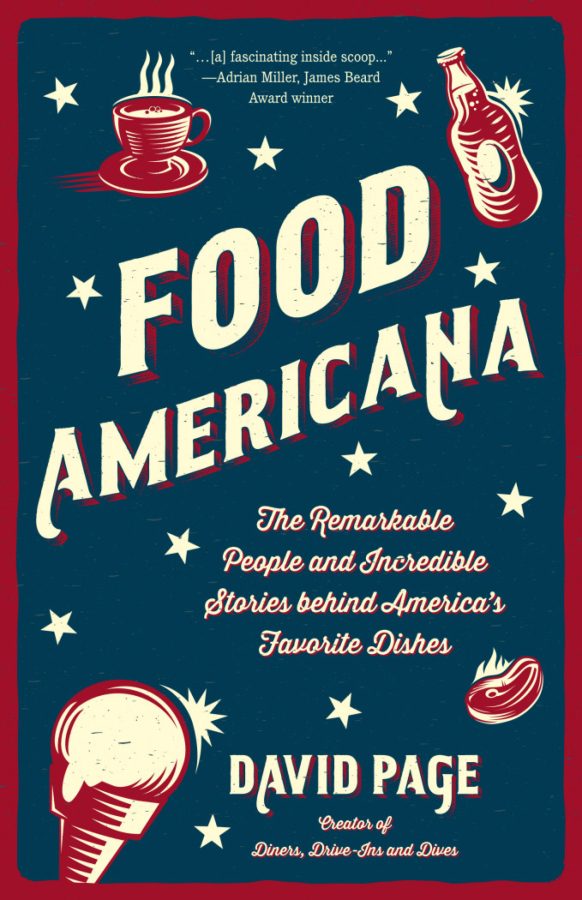Forget apple pie. Now, when we speak of how much something embodies the spirit of this country, we say it is as American as … sushi?
That, as far as I can tell, is the thesis of “Food Americana,” a new book by David Page celebrating the most comforting of American comfort foods.
Page is the creator of the long-running Food Network television show “Diners, Drive-Ins and Dives,” which sends restaurateur Guy Fieri around the country to an endless assortment of mom-and-pop shops in search of great cheap regional cooking.
The book delves into the history of a number of foods we typically think of as American — fried chicken, barbecue, chicken wings, ice cream — to show where they came from and to look at in what directions they are currently evolving.
Which is where the sushi comes in. It is no surprise to learn that sushi hopped over to America from Japan after World War II, brought not as much by returning GIs as by Japanese corporate executives opening offices in this country and craving the foods of home.
Sushi restaurants opened to serve the Japanese workers; they were discovered by Americans (actor Yul Brynner was among the first to popularize them), and the sushi craze took off.
But could sushi be considered an American comfort food? Think about this: Tracey Schram, a vice president of a major sushi supplier, is quoted as saying, “When you look at the millennials, this is something that’s their go-to food. Where us, it would’ve been a burger and fries. For that generation, it’s sushi.”
The idea is similar to what Page calls “the bagelization of America.”
Bagels, like sushi and pizza, came to America from other lands. At first, they were known only to people of the ethnic groups that imported them. Then other Americans discovered them, and the foods began changing to suit their taste.
Bagels became larger, softer, sweeter (part of the reason they are softer is that the mass-production machines required to feed a nation cannot handle the stiffer dough of a real bagel). And they are now being made with so many regional American ingredients and toppings that at one place in Alaska you can get reindeer sausage on a cheddar bacon bagel.
Similarly, sushi restaurants started using less raw fish to appeal to the American palate. They also put rice on the outside to hide the seaweed many people find unappetizing and use ingredients never found in Japan, such as cream cheese.
Pizza, too, has evolved to become something uniquely American. The crust here is crisper than in its native Italy, and we use more sauce and far more toppings. But also, among higher-end pizzerias, there is a trend toward re-creating the simpler pizzas of Naples, with a moist crust topped with nothing more than crushed tomatoes, mozzarella cheese and, if you want to be daring, fresh basil.
A similar movement is also going on in Chinese food, which Page also considers American (“there are more Chinese restaurants in America than all the McDonald’s, Burger Kings, Wendy’s and KFCs combined,” he writes).
Chinese food first came to this country with the Gold Rush of 1849, which drew thousands of Chinese men hoping to strike it rich. They brought with them woks and the concept of stir-frying over high heat, which they combined with available American ingredients to create a hybrid cuisine.
After a Chinese government official named Li Hongzhang visited this country in 1896 and was widely (if inaccurately) reported to have eaten one of these hybrid dishes called chop suey, the whole country went mad for the dish and the thousands of new restaurants that specialized in it.
Other hybrid Chinese recipes became standard too, with varying degrees of fidelity to anything that is actually served in China — shrimp with lobster sauce, crab Rangoon, beef with broccoli and, eventually, General Tso’s chicken.



